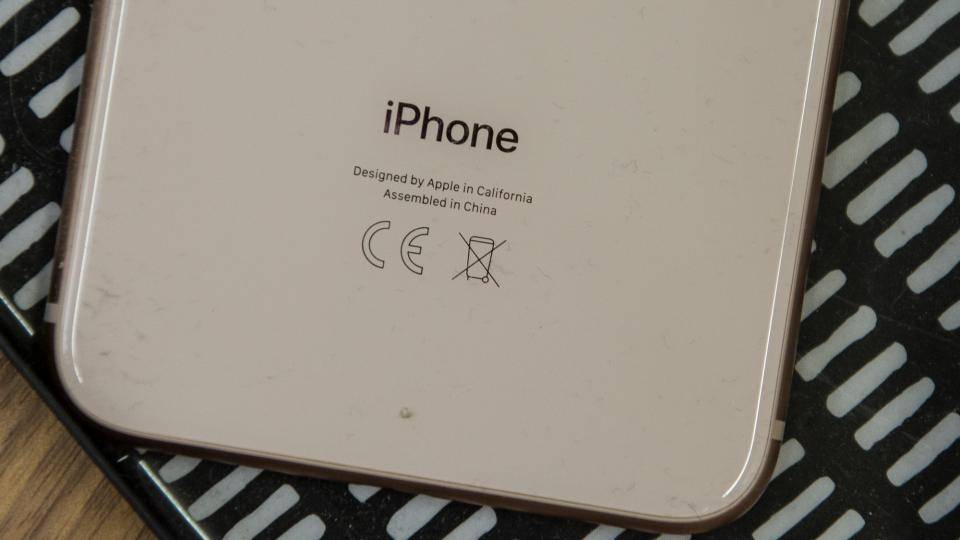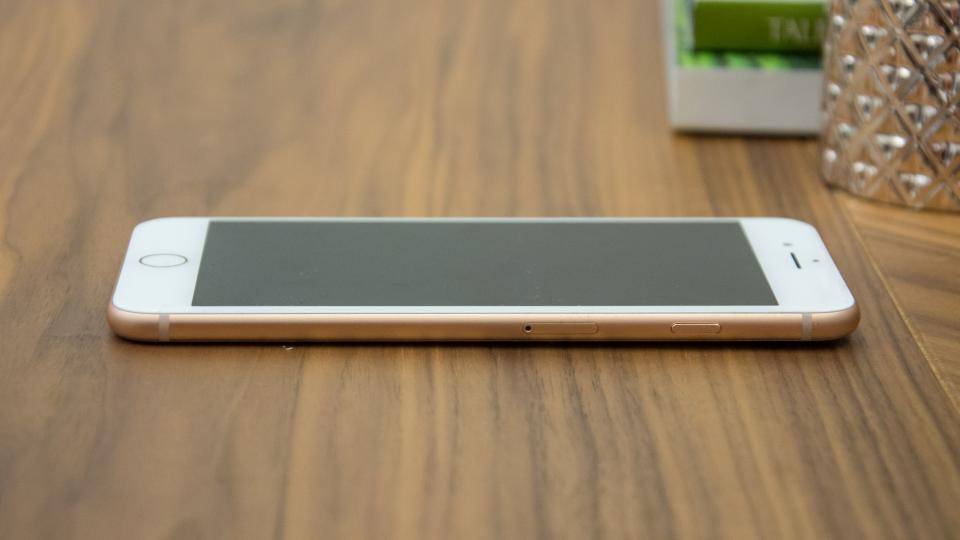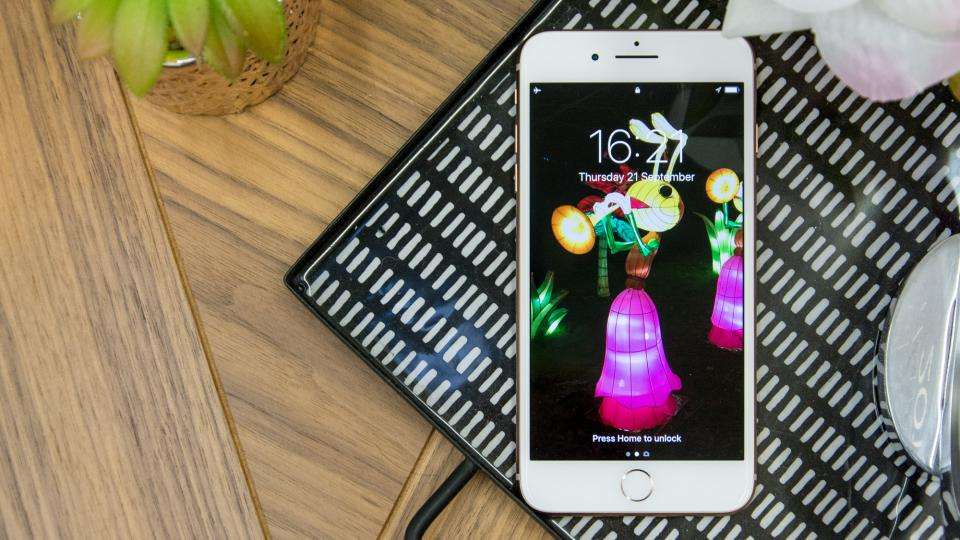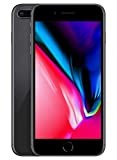Back in the day, Apple used to revamp the design of their smartphones every two years and boost the specifications in between. Recently, however, it has stepped outside the tick-tock development cycle. The Apple iPhone 8 Plus might be the latest, greatest iPhone (at least until the iPhone X comes along), but the design template it’s based on is now into its fourth year. So yes, it has a new glass back and yes, it has wireless charging and, okay, it has a dual-camera setup on the rear now, but fundamentally, the iPhone 8 Plus looks the same as the iPhone 6 Plus did way back in 2014.
Apple iPhone 8 Plus review: What you need to know
The iPhone 8 Plus is, then, pretty easy to summarise. It’s the phone you buy if you’re a dyed-in-the-wool Apple fan but can’t justify the leap to the £999 iPhone X. It represents the most bang-per-buck of all three new iPhone models.
It has as a 5.5in, Full HD IPS display and a dual-camera setup. From a distance, it looks just like a regular iPhone 7 Plus. It’s faster, of course, courtesy of the new A11 chip, and it has wireless charging and a new glass back, but in reality, there isn’t much difference between about the iPhone 8 Plus and the older 7 Plus.
Apple iPhone 8 Plus review: Price and competition
As with most of the smartphone industry, Apple has raised its prices in 2017, making the Apple iPhone 8 Plus more expensive than its predecessor. The cheapest iPhone 8 Plus price is now £800, although you do get double the storage than you did last year, at 64GB. The 256GB iPhone 8 Plus costs an eye-watering £949, though.
What’s the competition? If you’re not looking to jump ship to Android (trust me, you should, you really should), the strongest competition comes from last year’s iPhones, which have all now been reduced in price. The iPhone 8 is nice and all, but lacks the dual camera of the iPhone 8 Plus and it’s, well, a bit on the small side. Some might disagree, but to my mind charging £700 for a phone with a 4.7in screen seems crazy.
The iPhone 7 Plus is now £669 for the 32GB model, runs iOS 11 perfectly smoothly and quickly, and remains a powerful phone with a decent dual-camera and good battery life. If you’re moving up from an iPhone 6 Plus or even 6s Plus, it’s certainly worth considering.
If you’re considering the move to Android you have a seriously broad choice of handsets to choose from. From Samsung, the natural competitor to the 8 Plus the Galaxy Note 8. This has dual-cameras and a larger 6.3in AMOLED screen squeezed into a body that’s only slightly bigger than the iPhone and it has stylus support as well. That’s more expensive, though, at around £820.
If you don’t want a dual camera, there’s the Samsung Galaxy S8 Plus, again with a bigger AMOLED screen squeezed into a narrower, taller body. You can buy one of those for around £630 now, while the 5.7in variant – the regular Galaxy S8 – is around £530. If you do want dual cameras, the OnePlus 5 is even cheaper at £450 and still a perfectly good phone, although it does lack dust and water resistance.
Best Apple iPhone 8 Plus contact and SIM-free deals
Apple iPhone 8 Plus review: Design
As I’ve already pointed out, the iPhone 8 Plus is very similar to last year’s 7 Plus – so similar, in fact, that you wouldn’t be able to tell them apart if the two phones were side by side facing upwards on a table.
All the buttons, camera lenses and flash and nano-SIM card tray are in precisely the same locations as before. It’s still dust- and water-resistant to IP67, it still has a Force Touch fingerprint-sensor home button beneath the screen on the front, and (unfortunately) there’s still no 3.5mm headphone jack.
Flip the phone over, however, and there are some obvious differences. The biggie, of course, is the glass back, which looks and feels lovely. I was sent the Apple 8 Plus in gold, which looks a little beige to my eyes – if you can, opt for one of the other colours. The iPhone 8 Plus is also available in silver and black for now; still not a hugely inspiring choice, but at least they’re not beige.

The glass back is flat across most of its glossy expanse, but does curve up very slightly at the edges, so there’s no sharp chamfer to dig into your palm. It’s easy to keep free of fingerprints, too. One wipe on your jeans and, bang, the smudges are gone.
It’s a little too early to say how robust the glass is, though, or how scratch-resistant and how shatterproof. Apple says it’s tough, of course, but there’s no Gorilla Glass branding here to back up that claim. If you’re buying one, the advice has to be to pick up a case at the same time, just to be on the safe side.
One of the immediately positive implications of the glass back, however, is that the iPhone 8 Plus is no longer afflicted by those ugly plastic antenna strips. You can see them on the edges at the top and bottom of the phone on each side, but because they don’t wrap around the top and bottom edges like they used to, they’re far less obtrusive.
Other than this, and the fact that you now get wireless charging to the Qi standard (another benefit to a glass rear), the phone is now noticeably heavier than last time. It now weighs 205g, which is positively elephantine even with the current trend towards bigger handsets.

iPhone 8 Plus review: Display
So far, so ordinary. How about the display? Well, to look at the figures, you’d think Apple hadn’t changed anything at all. With all automatic adaptations disabled, the iPhone 8 Plus’ 5.5in IPS display turned in a near-identical set of figures to the iPhone 7 Plus in our tests.
Peak brightness reaches 553cd/m2 with a full white screen in the browser, the contrast ratio is 1,365:1 (the iPhone 7 Plus achieved 520cd/m2 and 1,350:1), and colour accuracy is spot on. It’s as you’d expect from any Apple product, in other words, but no better or worse than its predecessor.
And it’s certainly no better than the Samsung Galaxy S8, S8 Plus or Note 8 displays, all of which reach much higher peak brightness levels, use AMOLED panels and smash the iPhone 8 Plus out of the park when it comes to contrast.
The big development here is True Tone, which started out as an iPad-only feature. With True Tone enabled, the phone uses its sensors to gauge the colour temperature of the ambient light, matching the white balance of the colours onscreen.
The idea is that your brain doesn’t have to keep readjusting its perception of colour when you look away from the screen and back again, resulting in more natural-looking images and less eyestrain for you. It works beautifully and is a feature that’s well worth leaving on. I’d still rather be looking at a Samsung Galaxy S8 Plus, though.


Apple iPhone 8 Plus review: Performance and battery life
This is one area where you can categorically say the iPhone 8 Plus is a huge improvement. In fact, the new hexa-core A11 Bionic chip is so good that it batters not only its predecessor but also the Samsung Galaxy S8 and all of its Android flagship buddies into bloody submission as well.
Take a look at the following set of graphs if you don’t believe me. The iPhone 8 Plus is incredibly quick; the fastest phone we’ve ever benchmarked, in fact.
In the past, iPhones have typically outperformed their Android counterparts in the single-core Geekbench test but haven’t done so well in the multi-core part. This time around, performance is screamingly quick across the board.
Graphics performance is superb as well. Note, though, that this improved performance won’t get you higher frame rates in games or anywhere else. That’s because performance is effectively capped at the 60Hz refresh rate of the iPhone 8 Plus’ display – and that will remain the case until Apple decides to endow its iPhones with a super-smooth 120Hz screen similar to the ones it’s given to the recent iPad Pro models.
Battery life, finally, is decent but not wildly impressive. That’s perhaps because Apple has taken advantage of the extra efficiency of the A11 chip to reduce the size of the battery. Yep, the battery inside the Apple iPhone 8 Plus is a 2,675mAh unit, which is smaller by 225mAh than the iPhone 7 Plus’ 2,900mAh unit.
Here, the iPhone 8 Plus’ rivals have a clear upper hand. In our video-rundown battery test, in which we run at a set screen brightness of 170cd/m2 with the phone in flight mode to ensure a level playing field, the iPhone 8 Plus lasted 13hrs 54mins before giving up.
That’s a long way behind the Samsung Galaxy S8 Plus and OnePlus 5. And, yes, yes, I know: the iPhone 8 Plus can be charged wirelessly via Qi standard chargers, which means you can plonk it down on one of Ikea’s Selje nightstands or the base of one of its Varv lights without having to connect a wire to the base of the phone.
But, honestly, how much more trouble is it to connect a cable? Really, how much more convenient is it? Not much, if at all. If you think about it, a cable allows you to charge while you’re still using your phone, something that’s much trickier to do with a wireless charging pad.
